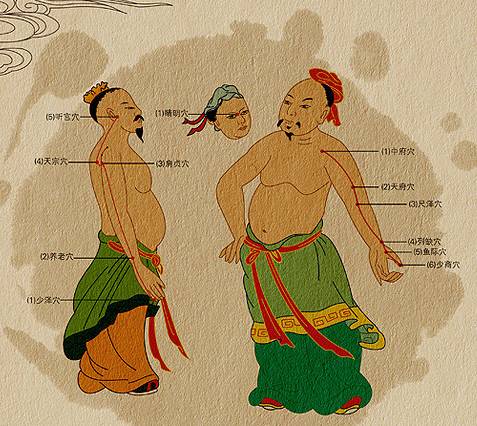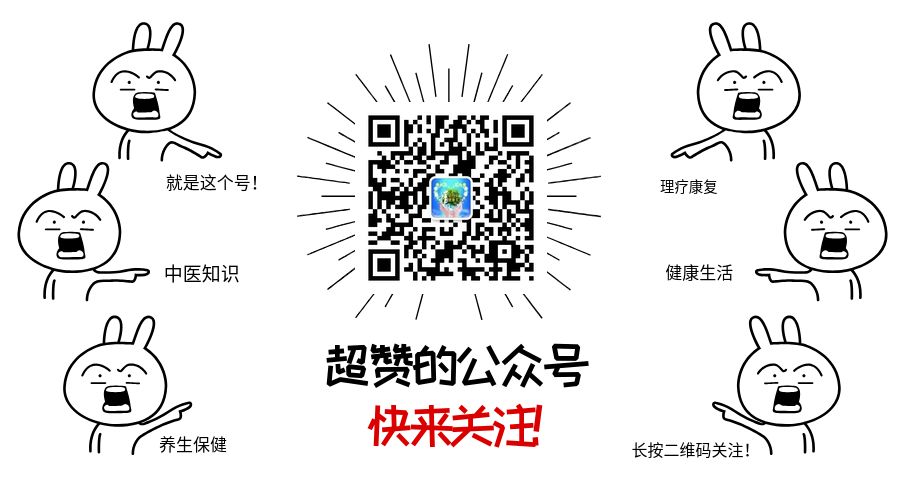
Meridians in Traditional Chinese Medicine (TCM) refer to the pathways through which Qi (vital energy) and blood circulate within the human body.
Meridians can be divided into two categories: the regular meridians and the extraordinary meridians. There are twelve regular meridians, which include the three Yin meridians and three Yang meridians of the hands and feet, collectively known as the “Twelve Meridians,” serving as the main channels for the flow of Qi and blood. The eight extraordinary meridians, which include the Du (Governing) Meridian, Ren (Conception) Meridian, Chong (Penetrating) Meridian, Dai (Belt) Meridian, Yin Qiao (Yin Heel) Meridian, Yang Qiao (Yang Heel) Meridian, Yin Wei (Yin Linking) Meridian, and Yang Wei (Yang Linking) Meridian, play a role in regulating, connecting, and coordinating the twelve regular meridians.
The twelve meridian branches are derived from the twelve regular meridians, primarily enhancing the connection between the two meridians that are interrelated in the twelve meridians. They also reach certain organs and body parts that are not traversed by the regular meridians, thus compensating for the deficiencies of the regular meridians.
The main pathways for the circulation of Qi and blood. The term “Jing” (meridian) implies a straight line and main trunk, in contrast to “Luo” (collateral).
According to the “Lingshu: Ben Cang”: “The meridians are responsible for the circulation of blood and Qi, nourishing Yin and Yang, moistening tendons and bones, and facilitating joints.”
The meridians are a type of channel in TCM. The main trunk of the channels is the meridians, while the branches are the collaterals.
1. Regular Meridians
There are twelve regular meridians, divided into three Yin meridians and three Yang meridians of the hands and feet, collectively referred to as the “Twelve Meridians.” Corresponding to these twelve meridians are the “Twelve Meridian Branches,” “Twelve Meridian Muscles,” and “Twelve Skin Areas.”
The Twelve Meridians
Hand Three Yin Meridians
Hand Taiyin Lung Meridian (Shou Taiyin Fei Jing)
Hand Jueyin Pericardium Meridian (Shou Jueyin Xinbao Jing)
Hand Shaoyin Heart Meridian (Shou Shaoyin Xin Jing)
Hand Three Yang Meridians
Hand Yangming Large Intestine Meridian (Shou Yangming Dazhang Jing)
Hand Shaoyang Sanjiao Meridian (Shou Shaoyang Sanjiao Jing)
Hand Taiyang Small Intestine Meridian (Shou Taiyang Xiaochang Jing)
Foot Three Yin Meridians
Foot Taiyin Spleen Meridian (Zu Taiyin Pi Jing)
Foot Jueyin Liver Meridian (Zu Jueyin Gan Jing)
Foot Shaoyin Kidney Meridian (Zu Shaoyin Shen Jing)
Foot Three Yang Meridians
Foot Yangming Stomach Meridian (Zu Yangming Wei Jing)
Foot Shaoyang Gallbladder Meridian (Zu Shaoyang Dan Jing)
Foot Taiyang Bladder Meridian (Zu Taiyang Pangsang Jing)
The Twelve Meridians, also known as the Twelve Regular Meridians, are the main body of the meridian system. Their names are determined based on their Yin-Yang properties, associated organs, and the different locations they traverse in the body. They correspond to the twelve organs, with each meridian named after its associated organ, combined with the pathways they traverse in the hands and feet, internally and externally, and front and back, according to the Yin-Yang theory, giving them different names. The names of the twelve meridians are: Hand Taiyin Lung Meridian, Hand Jueyin Pericardium Meridian, Hand Shaoyin Heart Meridian, Hand Yangming Large Intestine Meridian, Hand Shaoyang Sanjiao Meridian, Hand Taiyang Small Intestine Meridian, Foot Taiyin Spleen Meridian, Foot Jueyin Liver Meridian, Foot Shaoyin Kidney Meridian, Foot Yangming Stomach Meridian, Foot Shaoyang Gallbladder Meridian, and Foot Taiyang Bladder Meridian.
The twelve meridians are interconnected through the Yin and Yang meridians of the hands and feet, forming a cyclical and continuous transmission system. Qi and blood can flow through the meridians to reach the organs internally and the skin externally, circulating throughout the body. The order of flow is: starting from the Hand Taiyin Lung Meridian, it successively transmits to the Hand Yangming Large Intestine Meridian, Foot Yangming Stomach Meridian, Foot Taiyin Spleen Meridian, Hand Shaoyin Heart Meridian, Hand Taiyang Small Intestine Meridian, Foot Taiyang Bladder Meridian, Foot Shaoyin Kidney Meridian, Hand Jueyin Pericardium Meridian, Hand Shaoyang Sanjiao Meridian, Foot Shaoyang Gallbladder Meridian, Foot Jueyin Liver Meridian, and then returns to the Hand Taiyin Lung Meridian (Table 1). The direction and connection patterns are: the three Yin meridians of the hands run from the chest to the hands, connecting with the three Yang meridians at the fingertips; the three Yang meridians of the hands run from the hands to the head, connecting with the three Yang meridians of the feet on the face; the three Yang meridians of the feet run from the head to the feet, connecting with the three Yin meridians at the toes; the three Yin meridians of the feet run from the feet to the abdomen, connecting with the three Yin meridians of the hands in the chest and abdominal cavity.
The distribution pattern of the twelve meridians on the body surface is as follows: the Yin meridians associated with the six Zang organs (Heart, Liver, Spleen, Lung, Kidney, and Pericardium) are distributed on the inner sides of the limbs and the chest and abdomen, with the Hand Three Yin Meridians on the inner side of the upper limbs and the Foot Three Yin Meridians on the inner side of the lower limbs. The Yang meridians associated with the six Fu organs (Gallbladder, Stomach, Large Intestine, Small Intestine, Bladder, and Sanjiao) mostly run along the outer sides of the limbs, the head and face, and the back, with the Hand Three Yang Meridians on the outer side of the upper limbs and the Foot Three Yang Meridians on the outer side of the lower limbs. The arrangement order of the Hand and Foot Three Yang Meridians is: “Yangming” in front, “Shaoyang” in the middle, and “Taiyang” at the back; the arrangement order of the Hand and Foot Three Yin Meridians is: “Taiyin” in front, “Jueyin” in the middle, and “Shaoyin” at the back (the area above eight cun below the inner ankle is “Jueyin” in front, “Taiyin” in the middle, and “Shaoyin” at the back).
The relationship between the twelve meridians is: the three Yin and three Yang meridians of the hands and feet communicate with each other through the meridian branches and collaterals, forming six pairs of “interior-exterior” relationships. Among them, the Foot Taiyang and Foot Shaoyin are interior-exterior, Foot Shaoyang and Foot Jueyin are interior-exterior, and Foot Yangming and Foot Taiyin are interior-exterior. Hand Taiyang and Hand Shaoyin are interior-exterior, Hand Shaoyang and Hand Jueyin are interior-exterior, and Hand Yangming and Hand Taiyin are interior-exterior.
2. Extraordinary Meridians
There are eight extraordinary meridians, also known as the “Eight Extraordinary Meridians.”
Du Meridian (Governing Meridian)
Ren Meridian (Conception Meridian)
Chong Meridian (Penetrating Meridian)
Dai Meridian (Belt Meridian)
Yin Qiao Meridian (Yin Heel Meridian)
Yang Qiao Meridian (Yang Heel Meridian)
Yin Wei Meridian (Yin Linking Meridian)
Yang Wei Meridian (Yang Linking Meridian)
The Eight Extraordinary Meridians, which include the Ren Meridian, Du Meridian, Chong Meridian, Dai Meridian, Yin Qiao Meridian, Yang Qiao Meridian, Yin Wei Meridian, and Yang Wei Meridian, differ from the twelve regular meridians in that they are not directly associated with the Zang and Fu organs and do not have interior-exterior relationships. Their pathways are unique and irregular, hence they are called extraordinary meridians.
Their functions include:
1. Connecting the relationships between the twelve meridians;
2. Regulating the accumulation and distribution of Qi and blood in the twelve meridians.
The Ren Meridian runs along the midline of the abdomen and frequently intersects with the three Yin meridians of the hands and feet as well as the Yin Wei Meridian, thus it is referred to as the “Sea of Yin Meridians.” The Ren Meridian originates from the uterus and is related to women’s pregnancy, hence it is said to “govern the uterus and fetus.”
The Du Meridian runs along the midline of the back and frequently intersects with the three Yang meridians of the hands and feet as well as the Yang Wei Meridian, thus it is referred to as the “Sea of Yang Meridians.” The Du Meridian runs along the spine, ascends into the brain, and branches off from the spine to connect with the kidneys, establishing a close relationship with the brain, spinal cord, and kidneys.
The Chong Meridian extends from the head to the feet, penetrating the entire body; it serves as a crucial junction for Qi and blood, regulating the Qi and blood of the twelve meridians, hence it is called the “Sea of the Twelve Meridians” and is also known as the “Sea of Blood.” It is related to women’s menstruation.
The Dai Meridian originates from the lateral costal region, slants downward to the Dai point, and encircles the body like a belt, restraining the meridians that run vertically.
The Yin Qiao Meridian and Yang Qiao Meridian: “Qiao” implies agility and quickness. They function to nourish the eyes, control the opening and closing of the eyelids, and facilitate lower limb movement.
The Yin Wei Meridian and Yang Wei Meridian: “Wei” implies connection. The function of the Yin Wei Meridian is to “connect all Yin meridians”; the function of the Yang Wei Meridian is to “connect all Yang meridians.”
3. Twelve Meridian Branches
The twelve meridian branches are the separate pathways that diverge from the twelve regular meridians, entering and exiting the body cavity.
Each of the twelve meridian branches originates from the limbs of the twelve meridians, with the Yang meridian branches connecting to their respective meridians and the Yin meridian branches connecting to the Yang meridians that are interrelated.
They have three physiological functions:
1. Strengthening the connection between the two interrelated meridians in the twelve meridians;
2. The branches have a commanding role over other collaterals, enhancing the internal connections of the body;
3. Infusing Qi and blood to nourish the entire body.
4. Twelve Meridian Muscles
The twelve meridian muscles all originate from the tips of the limbs, converge at the joints and bones, and extend towards the trunk and head. They run along the body surface and do not enter the internal organs.
The Foot Three Yang Muscles originate from the toes, ascend along the outer thigh, and converge at the face; the Foot Three Yin Muscles originate from the toes, ascend along the inner thigh, and converge at the genitals; the Hand Three Yang Muscles originate from the fingers, ascend along the outer arm, and converge at the head; the Hand Three Yin Muscles originate from the fingers, ascend along the inner arm, and converge at the chest.
5. Twelve Skin Areas
The twelve skin areas are the locations on the body surface where the functions of the twelve meridians are reflected, and they are also where the Qi of the collaterals is distributed.
The distribution areas of the twelve skin areas are based on the distribution range of the twelve meridians on the body surface, which corresponds to the skin areas of the twelve meridians. Therefore, the “Su Wen: Lun Pi” states: “To understand the skin areas, one must refer to the meridians, and this applies to all meridians.”
Since the twelve skin areas are located on the outermost layer of the body and are connected to the Qi and blood of the meridians, they serve as the body’s external defense barrier, protecting the body, resisting external pathogens, and reflecting disease conditions.
At the same time, the skin areas are not only divisions of the meridians but also divisions of the collateral pathways, and they have a close relationship with the collateral pathways, especially the superficial collaterals. Thus, the “Su Wen: Lun Pi” also states: “All twelve meridian collaterals are parts of the skin.”
6. Distribution of Meridians
The Yin meridians are distributed on the inner sides of the body (chest and abdomen) and the inner sides of the limbs, converging at the perineum, belonging to the six Zang organs (Heart, Liver, Spleen, Lung, Kidney, and Pericardium).
The Yang meridians are distributed on the outer sides of the body (waist and back), head and face, and the outer sides of the limbs, converging at the Baihui point on the top of the head, belonging to the six Fu organs (Gallbladder, Stomach, Large Intestine, Small Intestine, Bladder, and Sanjiao).
The twelve meridian branches all diverge from the limbs of the twelve meridians, with the Yang meridian branches connecting to their respective meridians and the Yin meridian branches connecting to the Yang meridians that are interrelated.
The twelve muscles are the peripheral connecting parts of the twelve meridians.
The twelve skin areas are distributed on the skin surface, divided into twelve regions according to the twelve meridians.
The eight extraordinary meridians do not belong to the Zang and Fu organs, have no interior-exterior relationships, and differ from the twelve meridians, hence they are called extraordinary meridians.
The Ren Meridian is distributed along the midline of the abdomen, governing all Yin meridians, referred to as the “Sea of Yin Meridians.”
The Du Meridian is distributed along the midline of the back, governing all Yang meridians, referred to as the “Sea of Yang Meridians.”
The Chong Meridian penetrates from head to toe, referred to as the “Sea of the Twelve Meridians.”
7. Interior-Exterior Relationships of Meridians
Among the twelve meridians, the three Yin and three Yang meridians of the hands and feet form interior-exterior relationships.
Foot Taiyang – Foot Shaoyin
Foot Shaoyang – Foot Jueyin
Foot Yangming – Foot Taiyin
Hand Taiyang – Hand Shaoyin
Hand Shaoyang – Hand Jueyin
Hand Yangming – Hand Taiyin
Among them, the three Yang are exterior, and the three Yin are interior. Furthermore, Taiyang corresponds to Shaoyin, Shaoyang corresponds to Jueyin, and Yangming corresponds to Taiyin.
The eight extraordinary meridians have no corresponding interior-exterior relationships.
8. Functions of Meridians
In TCM theory,
the “Twelve Meridians” are the main pathways for the circulation of Qi and blood.
The “Eight Extraordinary Meridians” govern, connect, and regulate the twelve meridians.
The “Twelve Meridian Branches” connect the two interrelated meridians among the twelve meridians and supplement the deficiencies of the twelve meridians.
The “Twelve Meridian Muscles” restrain the bones and joints, ensuring the functional movement of the human body.
The “Twelve Skin Areas” are the places where the Qi of the twelve meridians is emitted, serving as the body’s external defense barrier.
Currently, over 10,000 people have followed and joined us.
















——Recommended Reading——

Note: The various prescriptions and formulas mentioned in this article are for reference and study by professional TCM practitioners only and should not be used as prescriptions. Please do not use them blindly; this platform does not bear any responsibility for any consequences arising from this!
Copyright Statement: We emphasize sharing; the articles and images come from the internet, and the copyright belongs to the original authors. If there are any objections, please inform the editor, and we will delete them promptly.
Previous Popular Articles Recommended:
※Click→ Being sick can ruin a whole family! Health is a responsibility that few understand.
※Click→ Health cannot overly rely on hospitals; the reason lies here!
※Click→ Fatty lumps: A time bomb for cardiovascular diseases!
※Click→ Why should we maintain health? An excellent answer!


